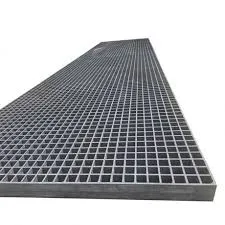
-
 Afrikaans
Afrikaans -
 Albanian
Albanian -
 Amharic
Amharic -
 Arabic
Arabic -
 Armenian
Armenian -
 Azerbaijani
Azerbaijani -
 Basque
Basque -
 Belarusian
Belarusian -
 Bengali
Bengali -
 Bosnian
Bosnian -
 Bulgarian
Bulgarian -
 Catalan
Catalan -
 Cebuano
Cebuano -
 China
China -
 China (Taiwan)
China (Taiwan) -
 Corsican
Corsican -
 Croatian
Croatian -
 Czech
Czech -
 Danish
Danish -
 Dutch
Dutch -
 English
English -
 Esperanto
Esperanto -
 Estonian
Estonian -
 Finnish
Finnish -
 French
French -
 Frisian
Frisian -
 Galician
Galician -
 Georgian
Georgian -
 German
German -
 Greek
Greek -
 Gujarati
Gujarati -
 Haitian Creole
Haitian Creole -
 hausa
hausa -
 hawaiian
hawaiian -
 Hebrew
Hebrew -
 Hindi
Hindi -
 Miao
Miao -
 Hungarian
Hungarian -
 Icelandic
Icelandic -
 igbo
igbo -
 Indonesian
Indonesian -
 irish
irish -
 Italian
Italian -
 Japanese
Japanese -
 Javanese
Javanese -
 Kannada
Kannada -
 kazakh
kazakh -
 Khmer
Khmer -
 Rwandese
Rwandese -
 Korean
Korean -
 Kurdish
Kurdish -
 Kyrgyz
Kyrgyz -
 Lao
Lao -
 Latin
Latin -
 Latvian
Latvian -
 Lithuanian
Lithuanian -
 Luxembourgish
Luxembourgish -
 Macedonian
Macedonian -
 Malgashi
Malgashi -
 Malay
Malay -
 Malayalam
Malayalam -
 Maltese
Maltese -
 Maori
Maori -
 Marathi
Marathi -
 Mongolian
Mongolian -
 Myanmar
Myanmar -
 Nepali
Nepali -
 Norwegian
Norwegian -
 Norwegian
Norwegian -
 Occitan
Occitan -
 Pashto
Pashto -
 Persian
Persian -
 Polish
Polish -
 Portuguese
Portuguese -
 Punjabi
Punjabi -
 Romanian
Romanian -
 Russian
Russian -
 Samoan
Samoan -
 Scottish Gaelic
Scottish Gaelic -
 Serbian
Serbian -
 Sesotho
Sesotho -
 Shona
Shona -
 Sindhi
Sindhi -
 Sinhala
Sinhala -
 Slovak
Slovak -
 Slovenian
Slovenian -
 Somali
Somali -
 Spanish
Spanish -
 Sundanese
Sundanese -
 Swahili
Swahili -
 Swedish
Swedish -
 Tagalog
Tagalog -
 Tajik
Tajik -
 Tamil
Tamil -
 Tatar
Tatar -
 Telugu
Telugu -
 Thai
Thai -
 Turkish
Turkish -
 Turkmen
Turkmen -
 Ukrainian
Ukrainian -
 Urdu
Urdu -
 Uighur
Uighur -
 Uzbek
Uzbek -
 Vietnamese
Vietnamese -
 Welsh
Welsh -
 Bantu
Bantu -
 Yiddish
Yiddish -
 Yoruba
Yoruba -
 Zulu
Zulu
fiberglass playground equipment
The Benefits of Fiberglass Playground Equipment
Playgrounds are essential spaces for children’s development, providing them with opportunities for physical activity, social interaction, and imaginative play. Among the various materials used for playground equipment, fiberglass is increasingly becoming a popular choice for its unique advantages. This article explores the benefits of fiberglass playground equipment and why it deserves consideration for both public playgrounds and private backyards.
First and foremost, fiberglass is renowned for its durability. Unlike wood, which can splinter or rot, or metal, which can rust and become extremely hot in the sun, fiberglass is weather-resistant and does not degrade over time. This resilience ensures that playgrounds maintain their safety and aesthetic appeal, reducing the need for frequent repairs or replacements. Moreover, fiberglass can withstand a wide range of temperatures, making it suitable for playgrounds in various climates, from chilly winters to hot summers.
Another significant advantage of fiberglass playground equipment is its versatility in design. Fiberglass can be molded into an array of shapes, colors, and sizes, allowing for creative and engaging structures that can stimulate children’s imaginations. This capability facilitates the creation of unique play environments, such as whimsical slides, climbing structures, and intricate playhouses that can draw children in and encourage active play. The vibrant colors of fiberglass can also enhance the playground's visual appeal, creating a more inviting atmosphere for children and their families.
fiberglass playground equipment

Safety is a paramount concern when it comes to playgrounds, and fiberglass can contribute positively in this regard. The surface of fiberglass is smooth, reducing the risk of cuts and scrapes that can occur with rougher materials. Moreover, many fiberglass playground designs incorporate soft edges and rounded surfaces that help prevent injuries. Importantly, when combined with proper safety surfacing, fiberglass equipment can significantly lower the risk of accidents, making it a safer choice for children.
In addition to physical safety, fiberglass playground equipment also promotes environmental sustainability. Many manufacturers produce fiberglass products using recycled materials, which helps reduce waste and minimize environmental impact. Furthermore, the long lifespan of fiberglass means that it does not need to be replaced as frequently as other materials, aligning with eco-friendly practices and benefiting the planet.
Finally, the maintenance requirements of fiberglass playground equipment are relatively low compared to other materials. A simple wipe-down or occasional rinse can keep the surfaces clean, and its resistance to mold and mildew makes it an excellent choice for maintaining hygiene in play areas.
In conclusion, fiberglass playground equipment offers a blend of durability, safety, design versatility, environmental sustainability, and low maintenance. These attributes make it a compelling option for creating engaging and safe play environments for children. As communities continue to prioritize children's play, opting for fiberglass equipment can pave the way for innovative and enjoyable playground experiences that foster physical and social development.
Latest news
-
Exploring the Benefits of Top Hammer Drifter Rods for Enhanced Drilling PerformanceNewsJun.10,2025
-
High-Precision Fiberglass Winding Machine for GRP/FRP Pipe Production – Reliable & Efficient SolutionsNewsJun.10,2025
-
FRP Pipes & Fittings for Shipbuilding - Corrosion-Resistant & LightweightNewsJun.09,2025
-
Premium FRP Flooring Solutions Durable & Slip-ResistantNewsJun.09,2025
-
Premium Fiberglass Rectangular Tanks Durable & Lightweight SolutionNewsJun.09,2025
-
Tapered Drill String Design Guide Durable Performance & UsesNewsJun.09,2025









